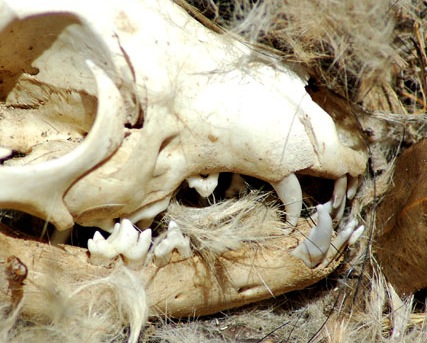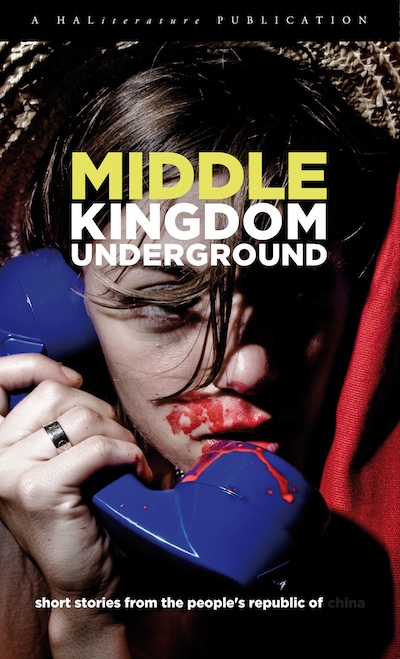Siberian Muskrat
by Christine Forte
This story was told to me by one of my middle-school students whose Shanghainese grandmother had told it to her. They both swear up and down that it’s true.
In the early 1950s, in those jubilant days just after the foundation of the Republic, it was common for young lovers to quietly slip out of the homes where they lived with their parents, grandparents and siblings to meet one another in the dark, quiet corners of Shanghai’s then still abundant lanes and alleys. (Of course, my student’s grandmother had never participated in any of this but had merely heard about it in whispers from her friends and neighbors.)
Then, as now, it was near impossible to be truly alone in one of these dark passageways, as even when there were no other humans around one would still often encounter creatures of other varieties. There were, of course, the common rats, stray cats, and occasional cockroaches. None of which were seen as threats to privacy or safety, rather they were simply natural parts of Shanghai lane life. More rarely, however, a Siberian muskrat would appear. These animals were long and furry, quite similar in appearance to a bushy overgrown lemur. As carnivores who routinely feasted on rats and mice, they also had a ferocious set of teeth and so were much feared by the female half of the loving Shanghai couples hiding in the lanes.
And so it came to be that the highest demonstration of love and chivalry in Shanghai at the time was for a young man to kill one of these feared beasts to protect his swooning lover. The bigger the muskrat slaughtered, the greater was his demonstration of love considered to be.
In 1953, my student’s grandmother’s neighbor’s sister, Ke Li, who lived in a lane off of Fuxing Lu, had fallen deeply in love with a handsome young man named Qiang. He worked as a brick layer and so had an extremely strong and muscular physique. (Incidentally, he was also the winner of Shanghai’s first and only men’s swimsuit competition in 1952.) Ke Li would count the minutes to their lane-corner encounters at night and by day she found time to pass the construction sites where he was working in order to gaze upon his physical splendor. Qiang was equally in love with her. Considered the great beauty of Fuxing Lu at the time, Ke Li had many suitors. But in her eyes, none could hold a candle to Qiang.
One night, during a late rendezvous, they happened upon the largest Siberian muskrat either of them had ever seen. Ke Li had to cover her mouth with her hands to suppress her screams of fright, while Qiang advanced toward the animal. He knew the moment to prove his love had arrived. Seeing them, the muskrat, which was at least a meter long and weighed 15—no 18 kilos—hissed, barred its teeth and then tried to run away. But Qiang was too fast. The battle was epic and still today many different versions of his bravery can be heard across the kitchen tables of Fuxing Lu. But the outcome of all of them is the same: Qiang triumphed over the beastly muskrat, killing it in the end, but not before it had managed to bite off his handsome nose.
When he turned back to present Ke Li with the glorious dead muskrat, blood gushing from the gaping hole in his face, she was no longer able to suppress her screams and she ran from him. To this day, the older residents of that part of Fuxing Lu can still describe the chills that ran through them as they were awoken with a start that night by the sounds of her fright. So horrified was Ke Li in fact, that she never spoke to Qiang again. Subsequently, he died not long after of a broken heart. Ke Li never managed to love again, and it is said that today she lives holed up in her family’s tiny apartment with her 73 pet Siberian muskrats.
When I first heard this story, I found it both haunting and far-fetched. I was skeptical on three fronts: that a woman truly in love could be so cruel to the object of her affection, that such terrifying lane monsters exist, and that anyone could live with such a filthy level of animal hoarding. So I did some research. I found nothing to assuage any of these doubts. But I did discover that a Shanghainese film entitled, “Muskrat Love,” the plot of which is very similar to the story told by my student, became popular in Moscow in the early 1960s. This film is credited with the rise in popularity of the “Siberian Muskrat” cocktail, which involves taking a shot of vodka through the nose. Russian bartenders of the time were said to believe it was the only cure for a broken heart.




Hope this passes into Shanghai urban legend…please get this story out there again when we get close to Valentines Day.